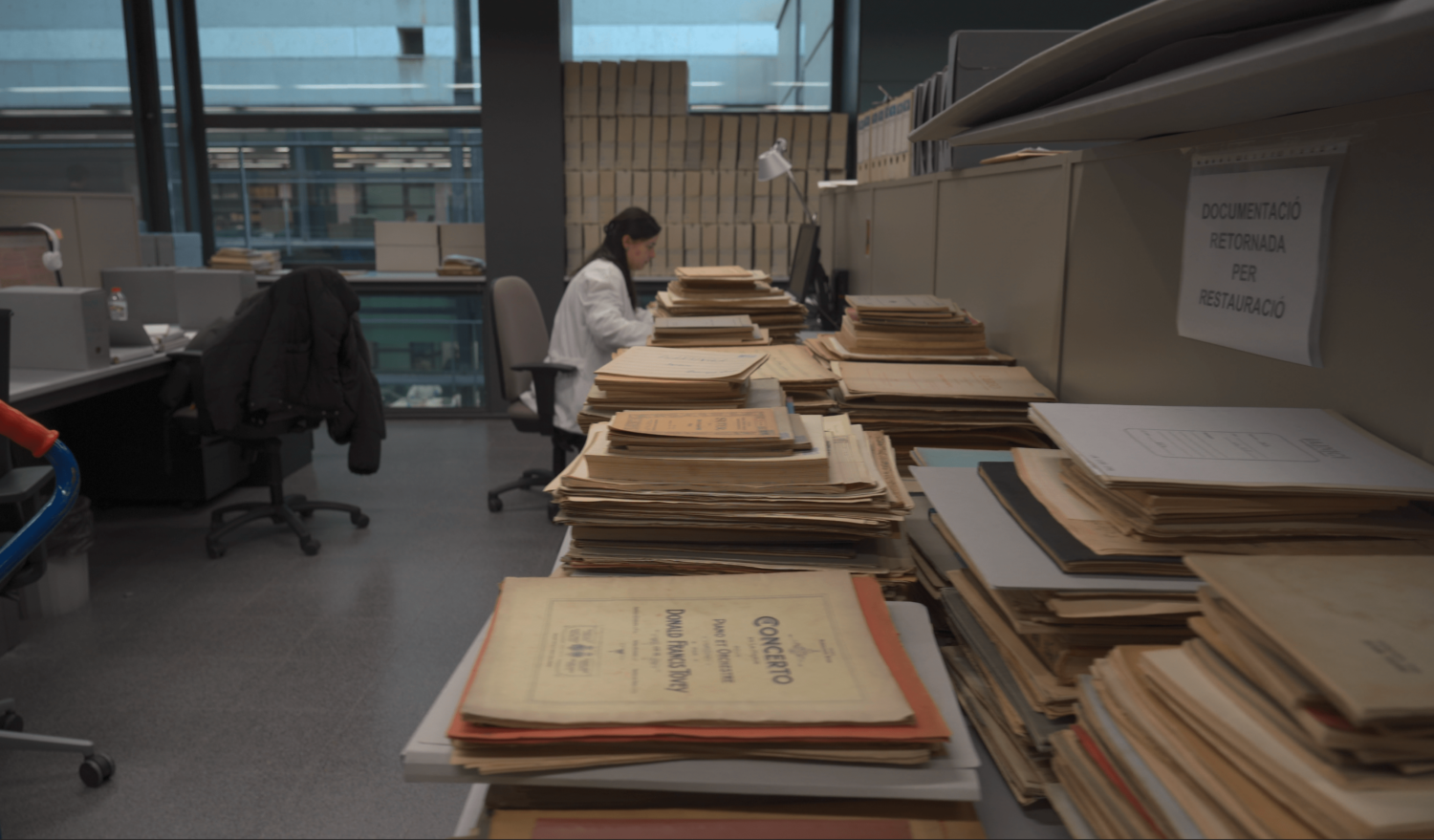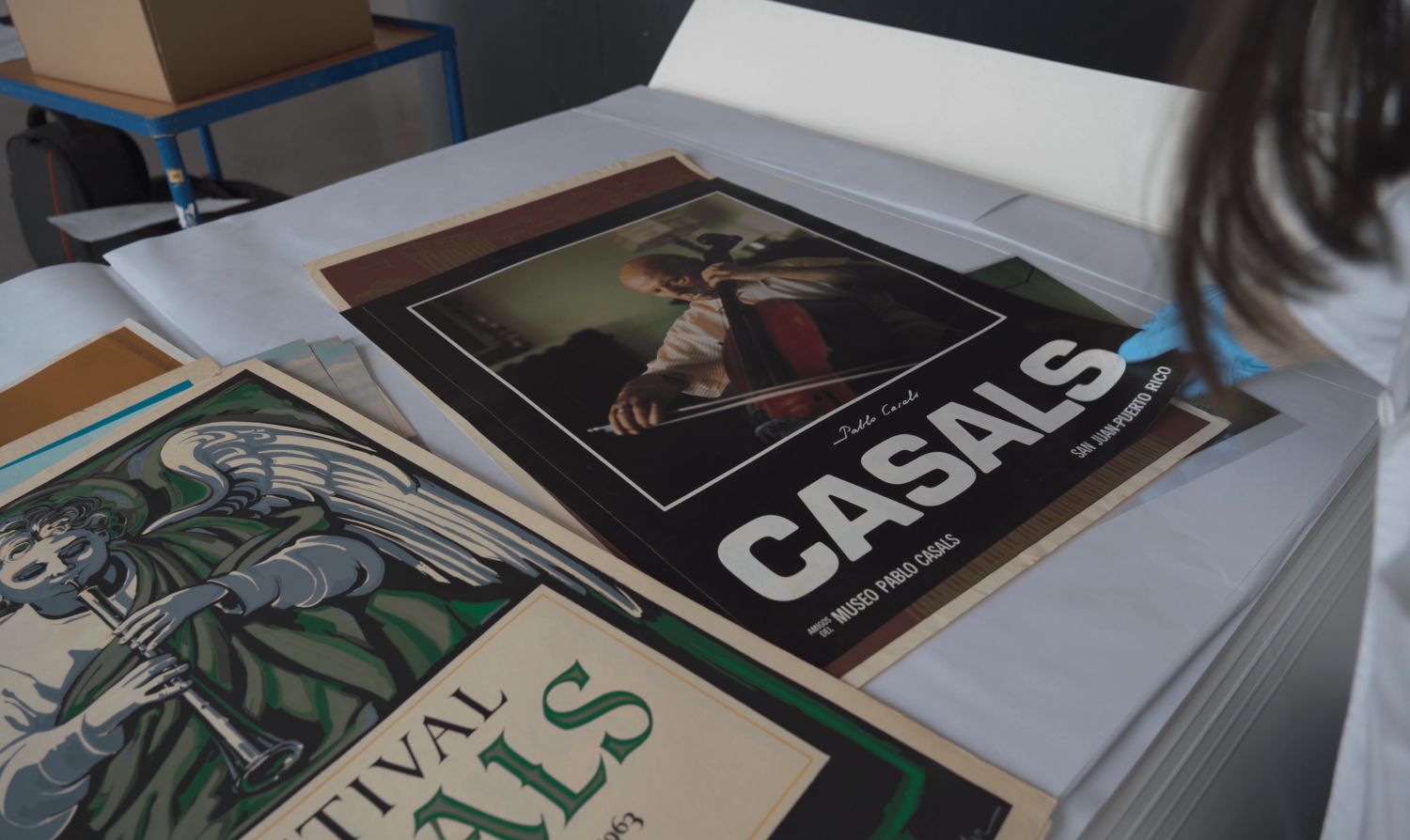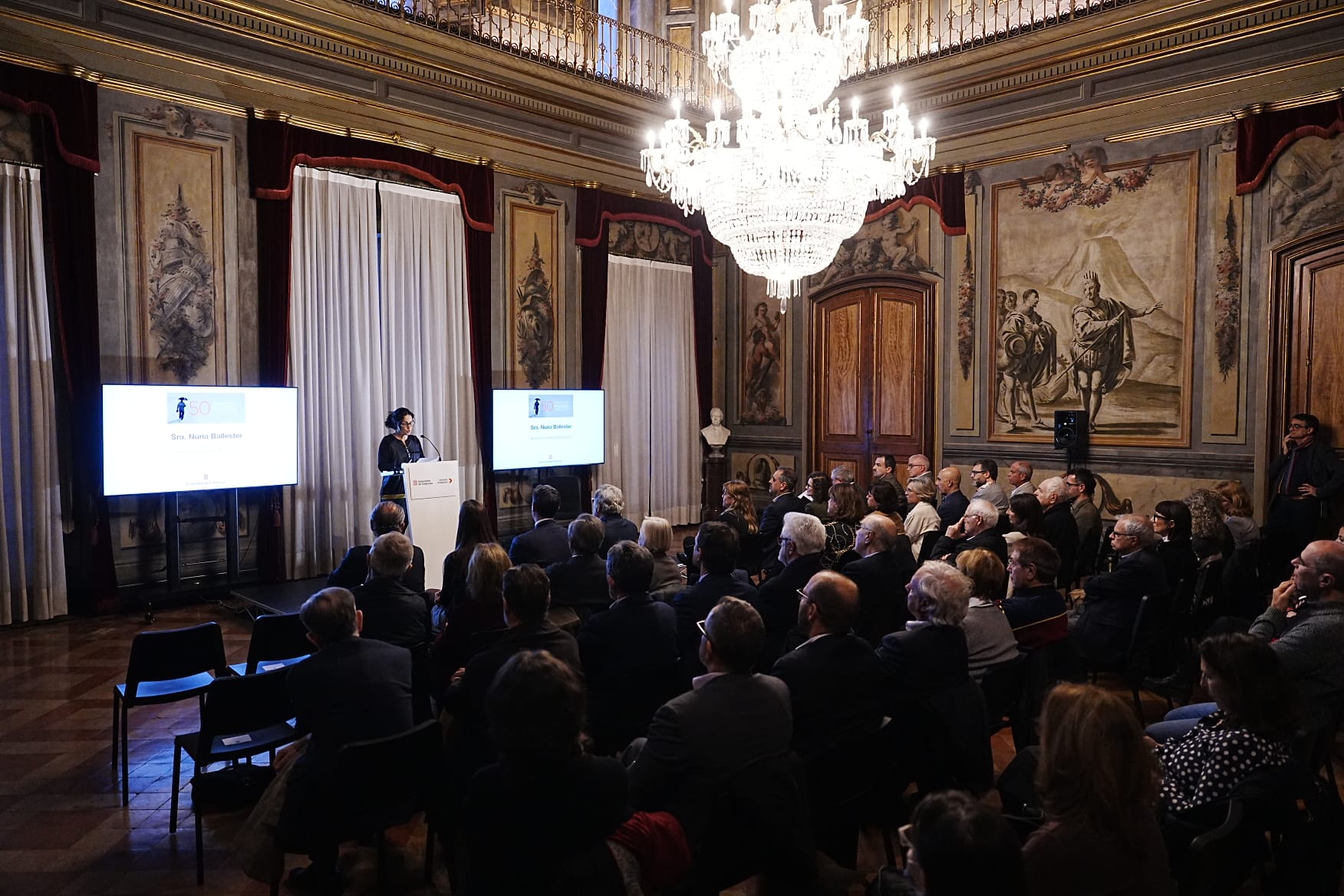We commemorate one of the most important figures of Catalan culture and highlight the importance of his documentary collection.
This past Tuesday, January 30, the Minister of Culture Natàlia Garriga and the General Director of Cultural Heritage, Sònia Hernández, with the General Director of the Pau Casals Foundation, Jordi Pardo, accompanied by the director of the Pau Casals Museum Núria Ballester and the director of the National Archive Francesc Balada have participated in the closing ceremony of the 50th Anniversary of Pablo Casals’ deceasing at the Palau Moja in Barcelona.
The purpose of the commemoration was to honor the memory of the most important Catalan musician of the 20th century and to highlight the importance of the documentary collection of one of the most important figures of Catalan culture. At the same time, it was intended to give importance to the intense and fruitful relationship between the Pau Casals Foundation and the Department of Culture through the National Archive of Catalonia.


The current state of the Pau Casals collection
The Pau Casals collection is a unique documentary archive and an international reference for the trajectory of the great musician. It includes personal documentation, handwritten compositions, press compilations, concert programs, photographs and sound and audiovisual recordings. In addition, there is also an extensive collection of correspondence with more than 50,000 letters, witnessing the relationships that Pablo Casals maintained in the various fields of music, culture, politics and society of his time.
As a result of the archival work carried out over all these years, the Pau Casals | ANC1-367 collection brings together 19,045 cataloguing units with the description already accessible through the Archives Online portal. Of these, 12,227 units correspond to textual documentation and the rest, 6,818, to the graphic and audiovisual part, making it one of the most important and exhaustively described personal collections of the more than 600 preserved in the archive.
A long institutional collaboration
On October 22, 1973 Pablo Casals died in Puerto Rico, after almost half a life in exile. Over the years he produced an extensive archive of personal, professional and public documentation that he kept in a methodical way. He was aware of the importance that this material would have in the future, not only as a witness of his career but also as a witness of almost a century of history.
With his wife, Marta Montáñez, they created the Pau Casals Foundation, in 1972, in order to preserve the patrimony that he had in his house of San Salvador, in El Vendrell. In addition, he also kept all the documentation, from his childhood until 1939, when he went into exile because of the Civil War. Some years later, after his death, part of the documentation generated during his exile in Prada de Conflent, where he lived regularly from 1939 to 1956, arrived in Catalonia. Finally, the collection was completed with the documentation generated during his last years of exile in Puerto Rico, from 1957 until the year of his death in 1973, and the return of his remains to Catalonia in 1979.
The relationship between the Pau Casals Foundation and the National Archive began in the spring of 1996, when the archive of the Pau Casals Orchestra was deposited. The following year, when restoration work began on the house-museum in San Salvador, the Foundation and the Archive agreed to temporarily transfer the musician’s collection from San Salvador to the National Archive with the aim of preserving it, restoring it and undertaking its exhaustive cataloguing. At the same time, the Foundation began a very important effort to recover more documentation on Pablo Casals from third parties, which it has been integrating into the collection.
As a result of the good collaboration established, in 2001, at the time of the formal inauguration of the Pau Casals Museum, the Foundation decided that the documentary collection would be deposited in the National Archive (except for some original documents that form part of the museum’s permanent exhibition), a situation that was definitively formalized in 2006 with the signing of a deposit agreement.
In recent years, and after the first classification and general inventory, the Pau Casals Foundation has promoted its management and digitization with the aim of making it available to researchers and disseminating it through the website.
